The world of flamenco pays tribute to Serranito, pioneer of concert guitar who, in the nineteen-seventies, along with Paco de Lucía and Manolo Sanlúcar, was part of the triumvirate that pushed the instrument to unknown heights
José Manuel Gómez Gufi
The world of guitar went all out for Victor Monge Serranito. “I shouldn’t be this nervous” he said before playing a taranto solo. And guitarists who’ve had something to do with his career began to arrive.
First up, Óscar Herrero accompanied by his son. Who could have imagined the day he was baptized that he would be here? That wasn’t the only secret in a shared life in guitar, in a profession in which you can count friends by the dozens. Serranito is easy to love, if you ask people about him they’ll say: “he’s a real gentleman” in addition to keeping wonderful karma. “All guitarists, no matter how modest they are, have something to offer”.
He was followed by Pepe Habichuela with his accustomed mastery, then joined by Rocío Diaz who sang some fandangos just finished that morning, and she sang to the Chamberi neighborhood where the maestro was born. Next, Rafael Riqueni appeared, and then we all felt something odd that would be a constant throughout the night, it was the feeling that all the guitarists had put aside their strengths to “become serranos and/or serranitos” and pay tribute to the influential master, the genius creator, the pioneer, the man who defended concert guitar when he was at Café de Chinitas in the sixties and who opened the way to form a triumvirate with Paco de Lucía and Manolo Sanlúcar that changed the course of the history of the flamenco guitar. José Manuel Gamboa served as emcee, don’t miss his biography “Víctor Monge Serranito, el guitarrista de guitarristas”.
Next up was the Caño Roto school led by El Entri and bringing together four generations (including Jesús de Rosario) to play an exercise that Victor himself explained had originated at Café de Chinitas when he would get all the guitarists together for the most spectacular number.
Neither flamenco nor Spanish music in general have prizes for congratulating its interpreters. And what’s more, our history, our pride and our future rests in the hands of Hispanophiles, always from abroad. It’s not possible to understand why this type of tribute does not originate in the Cultural Ministry, but is relegated to the blessed hands of Madrid’s Teatro Flamenco, a private enterprise under the direction of Javier Andrade who pointed out that the theater’s personnel went all out, as if this were a Hollywood gala. Shortly following, Ramírez guitars, with whom Víctor Monge has been associated throughout his career, offered him a copy of the family jewel, a solid gold guitar.
Kilino Jiménez was next, accompanying Ingueta Rubio in fandangos of his grandfather’s. Then, Eva Durán and José Carlos Gómez who accompanied the siguiriyas of David Pino, in top form. Serranito interpreted “Romance para un Poeta” in a format of two guitars and cello, and via video, guitarists J. M. Cañizares and J. A. Rodríguez also appeared with their prodigious technique and personality. It was already getting late when a cataclysm sounded, something infernal and removed from flamenco interpreted from the audience. It was Manuel Seoane, guitarist from a recent crop of Spanish “heavy” (Lujuria and Mago de Oz), who admitted that first he knew the man, and then the musician. What a monster! How that guy can play! Lots of “heavy” guitarists listen to Serranito to learn. Vicente Soto Sordera recalled his first record with Serranito, and was accompanied by Pepe Habichuela in soleá por bulerías. José María Bandera seemed more contemporary (abstract) than he was playing Paco de Lucía some weeks ago, and Gerardo Núñez appeared to deconstruct his own discourse (prodigious technique, feeling and power) to approach Serranito who wound up playing into the wee hours interpreting a melody for Paraguayan harp and guitar trio with Javier Conde and Mario Parrana.
With nearly all the artists on stage the honored musician showed knowledge and authenticity with his bulerías dance in which he was backed up by the legendary Toni el Pelao. An extraordinary night to open the series of flamenco Sundays.
Videos (Lista de reproducción)



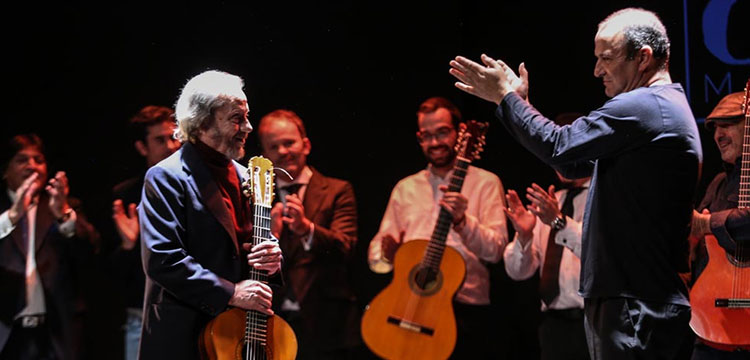





























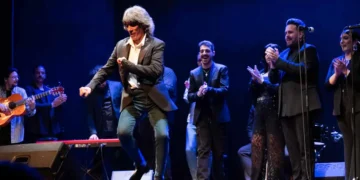
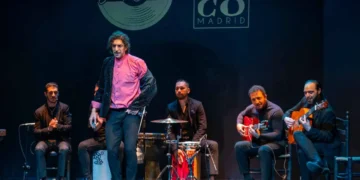


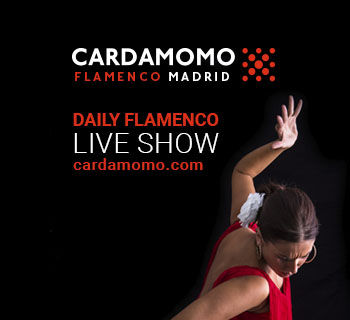
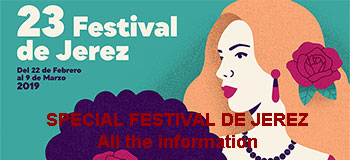
You must be logged in to post a comment.